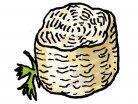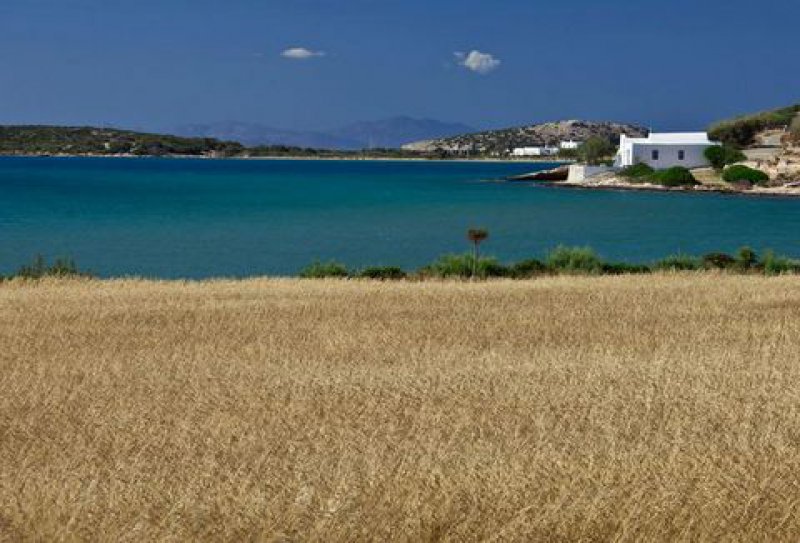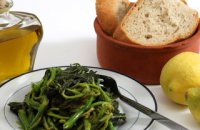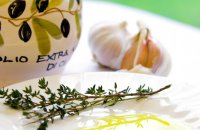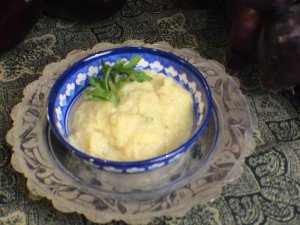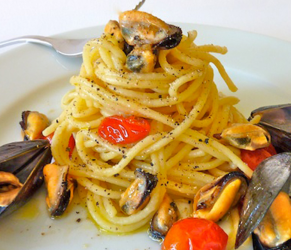Throughout the Greek countryside, summertime is characterized by the large consumption of “mezedes” or small summertime delicacies. Such morsels are usually light and easy to prepare, involving fresh seafood, vegetables, cheeses and very little meat with plenty of summer herbs. Some of the more popular mezedes, especially in the Cyclades, are the vegetable fritters. The dish known as "tomatokeftedes,” a specialty made from fresh ripened tomatoes grated and herbs that are mixed into a batter and fried in extra virgin olive oil, is a particular crowd pleaser. Variations include fritters with grated zucchini, cheese, onions and eggplants.
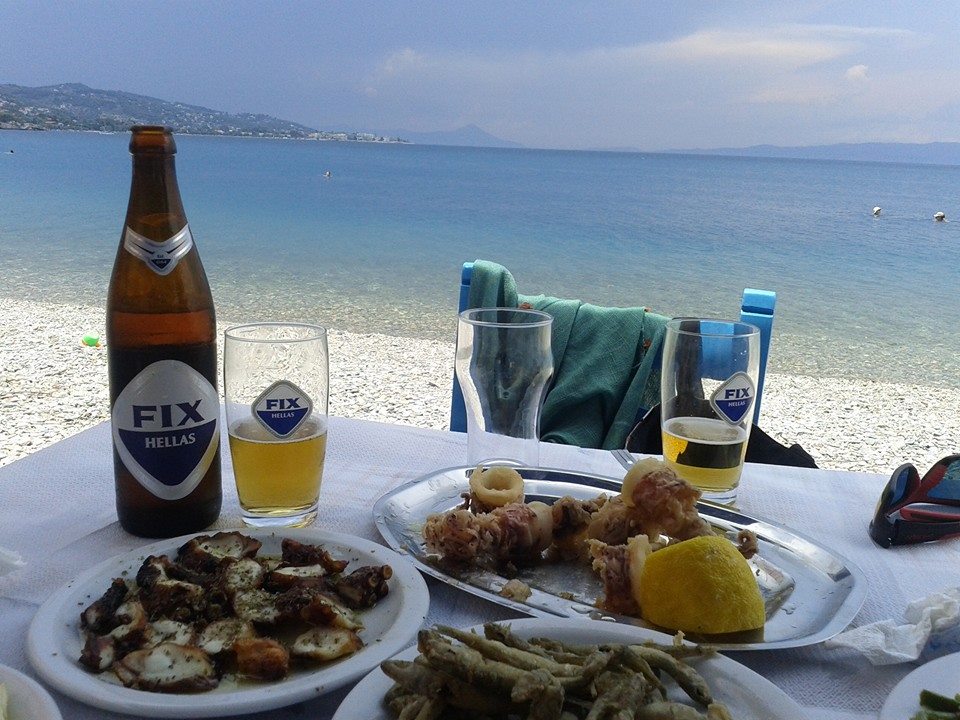
July is also known for its delicious grilled octopus mezedes, dishes that will be served with the famous Greek drink, ouzo "on the rocks.” Most octopus dishes are drizzled with oil, lemon, and vinegar, along with a sprinkling of oregano and parsley. And, of course, July is celebrated for its refreshing platters of mezedes- platters that will include olives and various cheeses, as well as slices of tomatoes and cucumbers.
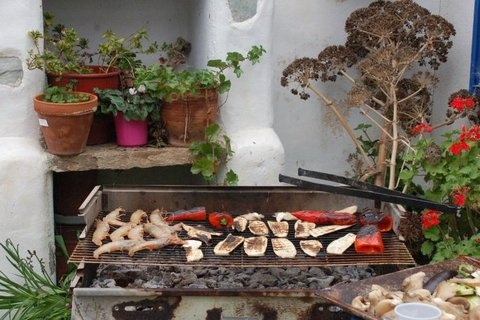
Throughout history, the names that cultures have given to the month of July reflect a certain regality and supremacy. According to Plutarch and other ancient sources, the ancient Greeks originally referred to the month of July as "Kronos," honoring the great father of the gods. Later on, the Greeks called it “Ekatombaion,” as a reference to the sun god Apollo. Nowadays, the month of July commemorates the Roman emperor Julius Caesar, arguably the greatest leader the world has known.
Even so, the communities of rural Greece refer to months by their clever “nicknames” still today. Sometimes, July is referred to as Yialisti or Yialino, as a reference to the "shiny" grapes that will ripen and glow in the sunlight. Another name, Fouskomina, derives from the verb "to swell," given that the figs of the countryside will begin to balloon during the month of July. But most of the time, the month of July is regarded as Alonari or Alonisti, names that stem from the verb meaning "to thresh." This is a reference to the month’s most important task: the threshing of wheat and other grains, an act that replenishes the year’s supply.
In July, the grain has reached its final stage, with golden tufts of ripened seed waiting to be cut and threshed. Although modern technology has provided an easier way to separate the grain from the husk, in many parts of Greece, farmers still use traditional methods, utilizing animals and threshing floors.
Because Greek culture traditionally considers bread to be a "sacred" food item, every step of its production process is revered and celebrated. To ensure that their yield is not affected by evil spirits, farmers will pile the wheat spikes into the shape of a cross before beginning the winnowing of the grain from the husk. They will also put aside the best seeds of grain for the fall sowing, as the first quantities of gathered grain are taken to the mill to be ground into flour. From this new flour the household makes a special kind of bread decorated on top using fork prongs and baked in an earthen vessel. This bread is divided among the family and workers at the threshing floor and served with feta, the traditional white cheese of Greece.
Some of the grain will be taken to the church to be blessed by the priest as an offering of gratitude to God for the good crop. Some traditions dictate that a small round bread ("koulouri") should be made and hung at the village spring so that the family’s luck will run as smoothly and as fast as the water. Then, children will look for these koulouris. He who finds the first will take it home as a promise of personal good luck for the rest of the year.

The month of July ( above painted as a boy by Greek painter Yannis Tsarouhis) is rich in feast days that call for celebrating and feasting. It is considered bad luck to work on certain feast days, as the particular saint will "burn" the seeds and destroy the crop. Saint Marina, however, is considered to be the protector of vineyards and vegetables gardens. The villagers believe that in praying to her, she will exterminate the bugs and diseases that infect their crops, as her name is connected with the verb "maraino," meaning "to blight." Other popular saints in the month of July are Saint Kyriaki, Saint Paraskevi, and Saint Panteleimon and their feast days are celebrated with a variety of outdoor activities. Often times, the faithful travel will to mountain tops carrying baskets laden with fresh fruit and seasonal delicacies.
Probably the most celebrated feast day is that of the Prophet Elias on July 20th. According to rural folklore, this Old Testament prophet was a seaman who desired only to escape the endless mountainside of mainland Greece. He took his oar and traveled as far as he could, asking the people he passed on his journey if they knew what he held in his hand and where it could be used. In hopeless desperation, he eventually settled on the top of the highest mountain he could find, in the hopes that the view would someday reveal the sea. But because the villagers there could not recognize the oar either, believing it to be merely an oddly shaped stick, the prophet became a recluse. As a result, most of the isolated chapels found on Greek mountaintops, chapels that will forever be on the lookout for a glimpse of the sea, are named in his honor.












































